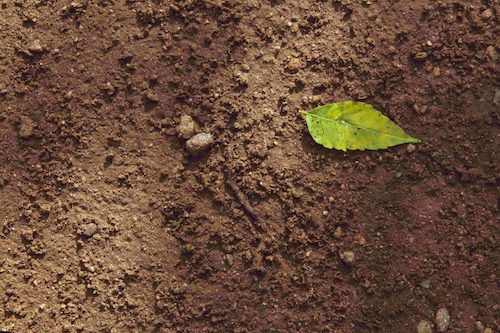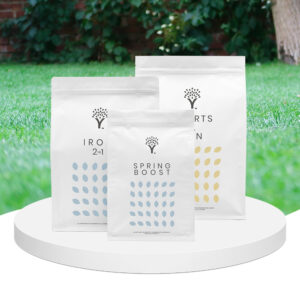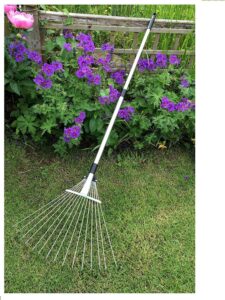Log in or create new account to save this product to your wishlist.
How to Improve Soil Quality: Analysing Your Garden Soil Type
The soil condition affects the health of your lawn, hedges, flowerbeds, and roses! Find out how to determine your garden's soil conditions and which improvements to make!
Latest articles
7 MIN 22 Jul How to keep your lawn in shape this summer 9 MIN 15 Jul Watering Your Garden: 10 Top Tips! 11 MIN 15 Jul Is Your Grass Type Right for your Garden? 11 MIN 10 Sep Create Your Low-Maintenance Garden – Tips and Ideas 11 MIN 08 Sep The Ultimate Guide to Choosing the Perfect Hedges for Your Garden 12 MIN 30 Aug The Top 20 Evergreen Climbers to Transform Your GardenLight, medium, or heavy — the classification of your garden soil is reminiscent of Olympic martial arts! But in this case, the soil type says more about which plants will feel at home in your garden than the strength of the soil’s structure. Read on to find out how to improve soil quality – it’s simple!!!
- How to determine your garden soil quality
- How to improve soil quality
In this article, we’ll explore how to improve soil quality in your garden and how to ensure your garden grows beautifully all year round.
Ready? Let’s get to it.
How to determine your garden soil quality

Finding out what type of earth you have in your garden is a simple case of getting your hands a little dirty.
Take a handful of damp garden soil and shape it into a ball. Then, roll it into a sausage. You have sandy soil if the ball crumbles and loses shape when you roll it. But you have medium-clay soil if the sausage holds its shape while maintaining a smooth surface. But if the sausage is sticky to the touch, you have heavy clay soil.
So, which is best? Light, mid, or heavy soil?
Garden soil quality – Light, sandy
Light soil is light brown in colour and sandy, loose, and crumbly in texture — often referred to as sandy soil.
Sandy soil drains very well – suitable for plants that don’t like to sit in soggy earth, such as hardy geraniums, tulips, and lavender.
However, this also means that sandy soil loses its moisture quickly — so you’ll probably be continuously watering your plants and lawn.
Sandy soil can be problematic for lawns, which need at least 1 inch of water weekly. In this case, you can improve the soil quality by adding improvers — read on for more details.
Plants that enjoy sandy soil
- Lupins
- Iris
- Cornflower
- Ball thistle
- Lilac
- Sea buckthorn berry
- Hornbeam
Garden soil quality – Medium-heavy
If you have medium-heavy soil, you’re in luck because it’s the best of both worlds — holding onto moisture AND draining well. Medium-heavy soils, therefore, don’t flood as quickly as heavy soils, and you don’t need to water your lawn or plants as regularly.
Because medium-heavy earth has good and relatively consistent water content, it warms up quickly in the spring, providing optimal growing conditions for numerous plants, such as chard, roses, and grass.
If you have medium-heavy soil, put your feet up — you don’t need to improve your growing conditions. But don’t forget that all soils still benefit from regular fertilisation.
Plants that thrive in medium-heavy soil
Flowering shrubs, such as:
- Weigela
- Hydrangea
- Buddleja
- Forsythia
Garden soil quality – Heavy soil

Heavy clay soils retain lots of water, which is good unless it gets saturated. You’ll find rich clay earth becomes easily waterlogged and lacks drainage, which can rot plant roots.
And as if that wasn’t bad enough, heavy, dense soil is low in oxygen because the surface air can’t penetrate the soil. So, while the clay is high in nutrients, the lack of oxygen can stunt plant growth.
This makes heavy soil particularly inhospitable for many plants — although you’ll find a proliferation of weeds because they love it!
Heavy soil warms up very slowly, so you may notice slow growth at the beginning of spring. But don’t worry; it’ll catch up as the ambient temperature increases.
Heavy soil-loving plants

While heavy soil is a challenge for many plants, some plants thrive in highly nutritious, dense earth, including:
- Roses
- Foxglove
- Hydrangea macrophylia
- Primrose
- Aster
- Day lily
- Forsythia
- Elder
- Thalictrum
How to improve soil quality
If you have heavy or light soil, you could improve the soil conditions to neutralise their extremes. Medium-clay soil: nothing to worry about!
Light soil
Firm up light soil by adding nutritious compounds that hold its structure, such as homemade compost, clay mineral flour, mulch, leaf mould, or horticultural clay. This will bring better water-retentive properties to your soil, helping it maintain its natural nutrients.
If you have light sandy lawn soil, add topsoil for extra structure and fertilise well because the nutrients are easily washed away with sandy soils.
Heavy soil
You can improve heavy soil by mixing it with horticultural sand or well-rotted compost. Pile heaps of these compounds onto your flowerbeds and turn them over into the earth with a garden fork.
For lawns, aerate your soil regularly, using a hollow tine aerator and filling the holes with good-quality topsoil. You can also scarify your lawn to help remove the dense felt layer that can develop over heavy soils, which also helps to aerate the topsoil.
Any questions?
I hope you’ve got all the information you need about how to improve soil quality. But if you have questions, don’t hesitate to get in touch.
We’d love to hear from you, and we promise to reply promptly!
Thanks for reading.
Leave a comment
Your answer will be displayed on the site and the interested party will be notified by email.
Leave a comment
Have a question or want to share your experience? Leave us a comment.
Read more
The best tips and tricks for a lush green lawn
 7 MIN
13 Sep
Lavender Cuttings: a step-by-step guide
7 MIN
13 Sep
Lavender Cuttings: a step-by-step guide
 11 MIN
10 Sep
Create Your Low-Maintenance Garden – Tips and Ideas
11 MIN
10 Sep
Create Your Low-Maintenance Garden – Tips and Ideas
 Scarifying Kit
All products after scarifying | Quickly restores the lawn after scarifying | Outsmart weeds quickly with the use of this kit
From: € 39.99
Scarifying Kit
All products after scarifying | Quickly restores the lawn after scarifying | Outsmart weeds quickly with the use of this kit
From: € 39.99
 Spring Lawn Care Kit
MOOWY’s choice for the spring | Quick recovery of your lawn after winter | A strong lawn prevents weeds
From: € 25.99
Spring Lawn Care Kit
MOOWY’s choice for the spring | Quick recovery of your lawn after winter | A strong lawn prevents weeds
From: € 25.99
 Long Lasting Lawn Fertiliser
Effective for 90 days | See results in 14 days! | Suitable for all types of grass and soil
From: € 13.99
Long Lasting Lawn Fertiliser
Effective for 90 days | See results in 14 days! | Suitable for all types of grass and soil
From: € 13.99
Do you want a lawn calendar?
🌱 All important maintenance moments for your lawn during the year. Leave your email and we will send you the lawn calendar for free.
Enter your email
Receive the lawn calendar in the mail
Enjoy a green lawn all year round!












Comments (0)
There are no comments yet. Well then, what are you waiting for to
Be the first to write your comment!inaugurate this pretty page?
Do you have some comments?